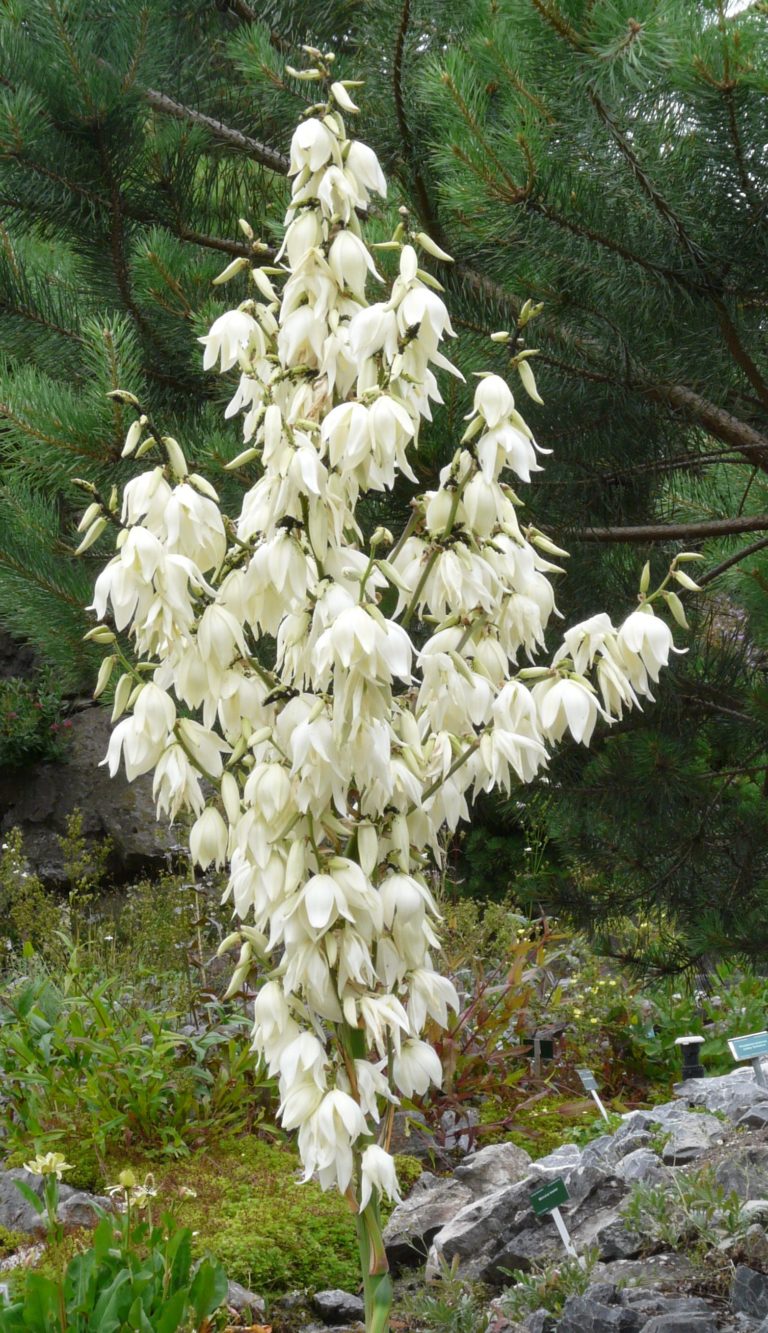Adam’s Needle is a broadleaf evergreen, suckering shrub from the Southeastern states. Although stemless, it has a rosette of stiff, sword-shaped leaves with loose filaments attached at the leaf margins, which distinguish it from other members of the genus. While these leaves reach only 2-3 feet in height, the flower stalks supporting a loose panicle of creamy white, bell-shaped flowers in early summer reach 6-8 or even 10 feet in height. Yucca thrives in full sun and in well drained, circumneutral soils. While it looks like a beach plant and thrives in sandy soil, it also grows well in our clay-based soils. It possesses a large taproot so is not easily moved once established, and, importantly, its lateral roots send up multiple shoots in its vicinity. While it depends on the Yucca moth for pollination, it attracts hummingbirds and is a larval host for several skippers, according to Lady Bird Johnson.
NURSERY HOURS
Wednesday: 10-4 Thursday: 10-6 Friday-Saturday: 10-4 Sunday: 12-4
Yucca filamentosa

Key Info
Scientific Name: Yucca filamentosa L.
Common Names: Adam's Needle, Spanish Bayonet
Family Names: Asparagaceae
Plant Type: Tree / Shrub
Leaf Retention: Evergreen
Flower Color: White.
Additional Info
Habit: Suckering, stemless evergreen shrub consisting of a rosette of stiff, sword-shaped leaves, and having a large fleshy taproot and lateral roots which send up new plants
Height: Rosette, 2-3' in height; flowers 6-10'
Spread: 4'
Soil Conditions: Dry to medium, acid, circumneutral and slightly basic pH, sandy, loamy, clay, rocky.
Leaves: Stiff, sword-shaped, blue-green, strappy leaves 2-3' long with loose, curly filaments along the margins.
Flowers (or reproductive structures: Terminal panicles of nodding, bell-shaped, creamy white flowers which can take 2-3 years to appear.
Fruit: Fruits are elliptical, dry capsules which break open to release seeds.
Natural Distribution: Beaches, sand dunes and rocky fields.
USDA Hardiness Zone: 5 - 9
USDA Wetland Indicator Status in NC: Not available.
Pollination: Yucca moth
Wildlife Connections: Attracts hummingbirds and is larval host for the Yucca Giant-skipper and the Cofaqui Giant-skipper according to Ladybird Johnson Wildflower Ctr.
Propagation: Propagated from basal offsets, from seeds or even cuttings.
